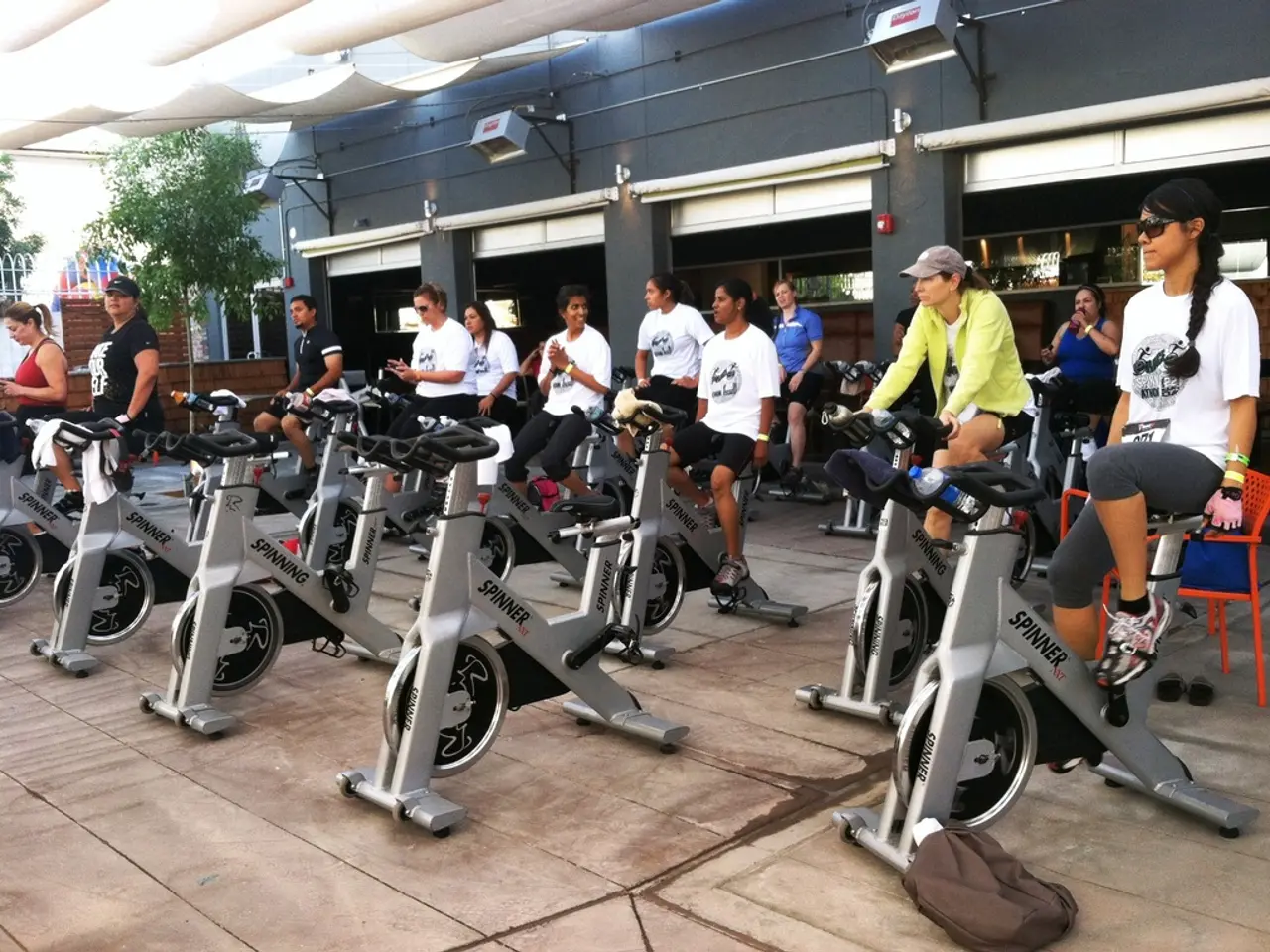Achieving Regular Exercise for Obese, Sedentary Individuals: A Gradual Approach
In the pursuit of a healthier lifestyle, many may find the prospect of starting an exercise routine daunting. However, a few key principles can make fitness more accessible and achievable for everyone.
Firstly, it's important to understand that workout partners don't necessarily need to share the same fitness level. What matters most is a shared commitment to showing up and maintaining consistency. This principle is exemplified by Sarah, a 42-year-old office manager, who began with 10 minutes of gentle walking after each meal and naturally progressed to longer sessions.
For those carrying extra weight, water-based exercises can be particularly beneficial due to their buoyancy and support for joints and muscles. Walking, even leisurely, is consistently ranked among the most beneficial activities for overall health and burns significantly more calories per minute compared to lighter individuals.
Moderate-intensity exercise, defined as moving at a pace that makes you slightly breathless but doesn't leave you doubled over, is a manageable starting point for many. The Centers for Disease Control and Prevention suggests 150 minutes of moderate-intensity exercise weekly, which can be divided as needed to fit one's lifestyle.
Tracking consistency, rather than performance, provides powerful visual feedback. This approach can be especially motivating for beginners, as it allows them to see their progress over time, rather than being discouraged by initial limitations.
Successful exercisers often find that motivation comes as a byproduct of the activity itself. Building accountability into your exercise routine dramatically increases the odds of success. This can be achieved by linking exercise to an existing habit you perform consistently (habit stacking).
For those with sedentary lifestyles, even 10 minutes of daily activity can lead to measurable improvements in blood pressure, blood sugar regulation, and mood within just two weeks. Recumbent stationary bikes offer support for weak core muscles and lower back issues, providing excellent cardiovascular exercise that can be adjusted to accommodate various fitness levels.
Finally, it's crucial to remember that sustainable fitness is about gradual, consistent improvement over months and years. Gradual progression in exercise allows the body to adapt systematically and reduces the risk of injury or fatigue. The University of New South Wales conducted studies on the effects of multiple 10-minute activity bursts per day on the body, finding that three 10-minute bursts of activity throughout the day deliver the same cardiovascular and metabolic benefits as a single 30-minute workout.
In conclusion, starting a fitness routine doesn't have to be intimidating. By focusing on consistency, choosing exercises that suit your current abilities, and building accountability, anyone can embark on a journey towards a healthier lifestyle.
Read also:
- Connection Between ADHD and Trauma?
- West Nile Virus detected in Kentucky for the first time; authorities advise locals to adopt safety measures
- September Initiative Launches for RSV Virus Prevention in Elderly Individuals Age 75 and Older
- "Living at such a rapid pace and taking on so many responsibilities may be beyond our natural limits"





